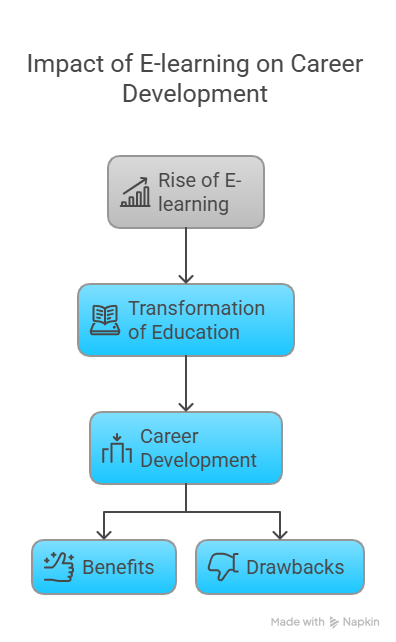Choosing the right educational pathway is a crucial decision that can significantly impact your career trajectory. The debate between traditional education and modern alternatives has been ongoing, with each having its own set of advantages. Traditional education, often referred to as in-person education, provides a structured learning environment, while modern alternatives offer flexibility and accessibility.
The question remains, which educational pathway is best suited for your career goals? The comparison between offline education vs online education is more than just a debate about the medium of instruction; it’s about the overall learning experience and outcomes. As we explore this topic further, we’ll delve into the specifics of each educational model, helping you make an informed decision about your educational and professional future.
Offline Education vs Online Education: The Fundamental Differences
As we delve into the world of education, it’s essential to understand the fundamental differences between offline and online learning methods. The distinction between these two educational approaches is becoming increasingly important as technology continues to evolve and influence the way we learn.
The traditional classroom setting and digital or remote education platforms have distinct characteristics that cater to different learning styles and preferences.
Key Characteristics of Traditional Classroom Learning
Traditional classroom learning is characterized by face-to-face interaction, structured schedules, and direct access to physical resources. Key benefits include immediate feedback from instructors, social interaction with peers, and a structured learning environment that fosters discipline and routine.
Defining Features of Digital and Remote Education
Digital and remote education, on the other hand, offers flexibility, accessibility, and a personalized learning experience through virtual classrooms and distance learning platforms. Key features include the ability to learn at one’s own pace, access to a wide range of digital resources, and the convenience of studying from anywhere.
The Current Educational Landscape in India
In India, the educational landscape is witnessing a significant shift towards digital education, with an increasing number of institutions adopting online and blended learning models. This trend is driven by the need for greater accessibility, flexibility, and affordability in education.
| Characteristics | Offline Education | Online Education |
|---|---|---|
| Learning Environment | Physical classrooms | Virtual classrooms |
| Flexibility | Limited flexibility | High flexibility |
| Access to Resources | Physical resources | Digital resources |
Career Benefits and Limitations of Offline Education
In-person education has long been the cornerstone of academic and professional development, offering a range of benefits. It provides students with a structured learning environment that fosters growth and development. The traditional classroom setting is conducive to both academic achievement and personal growth.

Networking and Relationship Building Opportunities
One of the significant advantages of traditional education is the opportunity to network and build relationships with peers and instructors. Face-to-face interactions facilitate stronger bonds and a sense of community, which can be beneficial for future career opportunities.
These relationships can lead to valuable connections in the industry, potentially opening doors to internships, job placements, and collaborative projects.
Practical Skill Development in Physical Settings
Offline education provides students with hands-on experience in physical settings, which is essential for certain fields like science, technology, engineering, and mathematics (STEM). Practical training in labs and workshops enhances problem-solving skills and prepares students for real-world challenges.
This kind of experiential learning is often more effective than theoretical knowledge alone, as it allows students to apply concepts to actual problems.
Industry Recognition of Traditional Degrees in India
In India, traditional degrees earned through offline education are widely recognized and respected by employers. Many industries still prefer candidates with conventional degrees, perceiving them as having undergone rigorous training and assessment.
This recognition can give students a competitive edge in the job market, especially in traditional sectors.
Geographical and Financial Constraints
Despite its benefits, offline education comes with its own set of challenges, including geographical and financial constraints. Students from remote areas may find it difficult to access quality educational institutions, and the cost of commuting or relocating can be prohibitive.
These limitations can restrict access to quality education for certain segments of the population, highlighting the need for alternative educational pathways.
Career Advantages and Challenges of Online Education

The rise of e-learning has transformed the way we approach education and career development. As we explore the realm of online education, it’s essential to understand both its benefits and drawbacks in the context of career advancement.
Flexibility and Work-Life Balance Benefits
One of the significant advantages of online education is its flexibility, allowing learners to balance their studies with work and other responsibilities. This flexibility enables individuals to continue working while pursuing higher education, thereby not having to put their careers on hold.
For instance, professionals can opt for part-time online courses that fit around their job schedules, ensuring they can upskill without compromising their current roles.
Access to Global Educational Resources
Internet-based education provides access to a vast array of global educational resources, enabling learners to tap into knowledge and expertise from around the world. This global access enriches the learning experience and exposes students to diverse perspectives and methodologies.
Employer Perceptions of Online Degrees in Indian Job Market
In the Indian job market, the perception of online degrees has been evolving. While some employers still harbor reservations about the validity of online qualifications, many are now recognizing the value of degrees from reputable online institutions.
| Industry | Acceptance of Online Degrees | Future Outlook |
|---|---|---|
| IT and Software | High | Increasing |
| Finance and Banking | Moderate | Improving |
| Traditional Sectors | Low | Gradual Acceptance |
Self-Discipline and Technology Requirements
Online education requires a high degree of self-discipline and motivation, as learners must manage their time effectively and stay engaged without direct supervision. Additionally, having the right technology and internet connectivity is crucial for a seamless learning experience.
By understanding these challenges, individuals can better prepare themselves for the demands of online education and make informed decisions about their educational pathways.
Conclusion: Making the Right Educational Choice for Your Career Path
Choosing between offline education and online education is a crucial decision that can significantly impact your career path. Both modes of education have their benefits and drawbacks, which have been discussed in detail in the preceding sections.
The offline education vs online education debate ultimately boils down to individual preferences and career goals. While traditional classroom learning offers networking opportunities and practical skill development, digital education provides flexibility and access to global resources.
In the Indian context, it’s essential to consider factors like industry recognition, geographical constraints, and employer perceptions when making this decision. By weighing these factors and understanding the fundamental differences between offline and online education, you can make an informed choice that aligns with your career aspirations.
Ultimately, the key to success lies in selecting the educational mode that best fits your needs, whether it’s offline education, online education, or a blend of both, often referred to as digital education.
FAQ
What is the main difference between offline education and online education?
Offline education, also known as traditional education, refers to in-person education where students attend physical classrooms, whereas online education, also referred to as e-learning or distance learning, involves virtual classrooms and internet-based education.
How does traditional classroom learning benefit students in terms of career development?
Traditional classroom learning provides opportunities for networking and relationship building, practical skill development in physical settings, and industry recognition of traditional degrees, all of which can be beneficial for career development.
What are the limitations of offline education?
Offline education is often associated with geographical and financial constraints, limiting access to education for some individuals, and may not offer the same level of flexibility as online education.
What are the advantages of online education in terms of career development?
Online education offers flexibility and work-life balance benefits, access to global educational resources, and can be more accessible to individuals with geographical or financial constraints, making it a viable option for career development.
How are online degrees perceived by employers in the Indian job market?
While perceptions may vary, many employers in the Indian job market are increasingly recognizing the value of online degrees from reputable institutions, and digital education is becoming more mainstream.
What are the challenges associated with online education?
Online education requires self-discipline, and technology requirements can be a barrier for some individuals, but these challenges can be mitigated with the right support and infrastructure.
Can online education and offline education be combined?
Yes, many institutions are now offering blended learning options that combine the benefits of both online and offline education, providing students with flexibility and access to in-person learning experiences.
Reference




